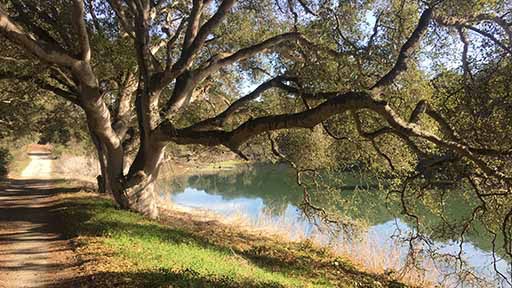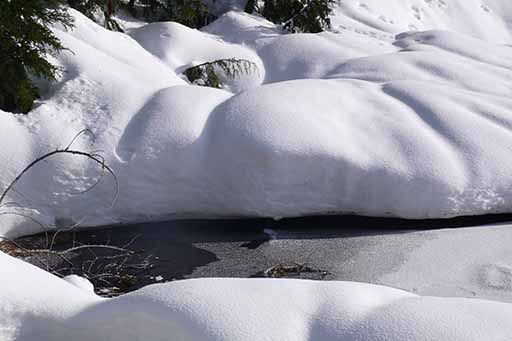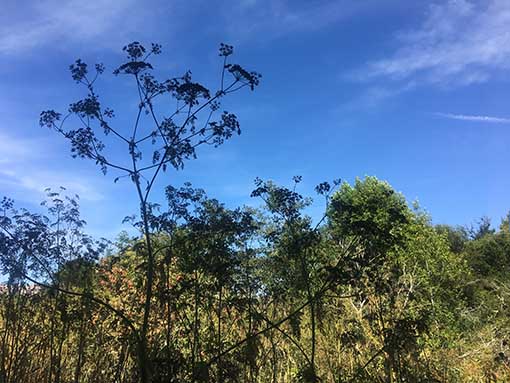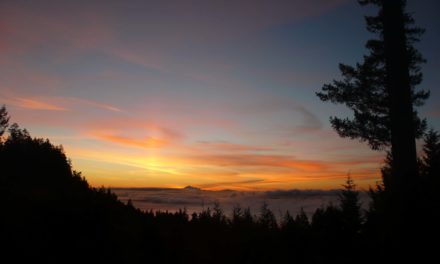Something to keep in mind…
…
Worldwide
.
nonviolent regime change
…
for
…
Climate Future
..
.

WHAT IF…
What if… we had world leaders that cared about the Climate Crisis. What if the U.S., Great Britain, Saudi Arabia, Brazil, just for starters, all had leaders that were working together to save the planet from this existential crisis.
The world has never faced such an event as this. The door is closing, and maybe not so slowly, on our very existence. That is what existential means folks – of or relating to existence. Existence, as we know it, is waning. For just about everything.
The real gotcha here, is that we knew this. We know this. But the people in power are too busy writing counter memes, cray-cray tweets, controlling the message and filling the interwaves with garbage.
The time is now. The Amazon is burning. This is an end game people.
”For every square yard of forest, 27 square yards of leaves and needles blanket the crowns.
In addition, each summer, trees use up to 8,500 cubic yards of water per square mile, which they release into the air through transpiration.
This water vapor creates new clouds that travel farther inland to release their rain.
This water pump works so well that the downpours in some large areas of the world, such as the Amazon Basin, are almost as heavy thousands of miles inland as they are on the coast.” The Hidden Life of Trees by Peter Wohlleben
THE WHOLE PROCESS BREAKS DOWN IF COASTAL FORESTS ARE CLEARED.
And, of course if, say, a large patch of rainforest was destroyed by fire, then that would interrupt the path of transpiration and the result would be that the trees ‘upstream’ would not receive precipitation.
‘Worst of wildfires still to come’ despite Brazil claiming crisis is under control
The Guardian 8-28-19
The fires raging in the Brazilian Amazon are likely to intensify over the coming weeks, a leading environmental expert has warned, despite government claims the situation had been controlled. About 80,000 blazes have been detected in Brazil this year – more than half in the Amazon region – although on Saturday far-right president Jair Bolsonaro claimed the situation was “returning to normal”. … But in an article for Brazil’s O Globo newspaper on Wednesday, one prominent forestry expert warned that the country’s annual burning season had yet to fully play out and called for urgent steps to reduce the potential damage. “The worst of the fire is still to come,” wrote Tasso Azevedo, a forest engineer and environmentalist who coordinates the deforestation monitoring group MapBiomas. Azevedo said many of the areas currently being consumed by flames were stretches of Amazon rainforest that had been torn down in the months of April, May and June. But areas deforested in July and August – when government monitoring systems detected a major surge in destruction – had yet to be torched. The Brazilian Amazon lost 1,114.8 sq km (430 sq miles) – an area equivalent to Hong Kong – in the first 26 days of August.
Where are the leaders?

HOT AIR NEWS ROUNDUP
If you read nothing else read this…
Exclusive: As fires race through Amazon, Brazil’s Bolsonaro weakens environment agency
Reuters 8-28-19
Since he took office on January 1, Ibama’s budget has shrunk by 25% as part of government-wide belt tightening, according to internal government data collected by the opposition PSOL party and shared with Reuters. Among the cuts: funding for prevention and control of forest fires was reduced 23%. New leadership at Ibama also has made it tougher for the agency to crack down on illegal logging, farming and mining that have despoiled nearly 12,000 square kilometers (4,633 square miles) in the Amazon this year, all of the former and current employees told Reuters. For example, field agents have seen new restrictions on their ability to destroy heavy equipment found at the scene of environmental crimes, a long-standing tactic to slow land-grabbers, five of the people said. … Through July, destruction of Brazil’s rainforest is up 67% compared to the same period a year ago, according to preliminary data released by the country’s National Institute for Space Research (INPE). Nearly 80,000 fires have been recorded this year through Aug. 24, the highest level since at least 2013, INPE says. Environmentalists say Brazilian ranchers and farmers are intentionally igniting the jungle canopy to expand their operations illegally, emboldened by Bolsonaro’s pro-development, anti-regulation message. Reuters was unable to confirm this claim.
Brazil Angrily Rejects Millions in Amazon Aid Pledged at G7, Then Accepts British Aid
NYT 8-28-19
But early the next day, Mr. Bolsonaro offered possible terms for its acceptance. If Mr. Macron withdrew what he called personal insults and insinuations that Brazil does not have sovereignty over the Amazon, he said, he would reconsider. “He will have to withdraw his words, and then we can talk,” Mr. Bolsonaro said. For Mr. Bolsonaro, who has governed as a far-right populist stoking nationalist sentiment, the defiant rebuff of the G7 aid played well to his base. But an outright rejection of any outside help might also have undermined the nation’s efforts to control the fires, possibly further eroding Mr. Bolsonaro’s plummeting popularity. … More than 26,000 forest fires have been recorded in the Amazon rainforest this month, the highest number in a decade, setting off outrage and calls for more protections. The forests absorb a significant share of the planet’s climate-warming carbon dioxide, are home to indigenous peoples, and are a vital habitat for endangered species.
Amazon fires: Brazil to reject G7 offer of $22m aid
BBC 8-27-19
Wildfires often occur in the dry season in Brazil but satellite data published by Brazil’s space agency show an increase of 80% this year. BBC analysis has also found that the record number of fires being recorded coincides with a sharp drop in fines being handed out for environmental violations. … Mr Bolsonaro has previously said his government lacks the resources to fight the record number of fires in the Amazon region but his government is also being accused of slashing funding for environmental protection. “The funding for Brazil’s environment agency has gone down by 95% this year,” Yadvinder Malhi, professor of Ecosystem Science at the University of Oxford, told the BBC’s Today programme. On Friday, President Bolsonaro authorised the military to help tackle the blazes.
How Bolsonaro’s Climate Change Denial & Anti-Indigenous Policies Led to Massive Fires in the Amazon
Democracy Now 8-28-19
In Brazil, fires continue to rage in the Amazon, and new drone footage shows the smoke and flames gathering strength. A vast plume of smoke has spread across South America and the Atlantic Ocean and is visible from space. The fires are also destroying large swaths of land in Bolivia. The fires are unprecedented in recorded history, and environmentalists say most of the fires were deliberately set by illegal miners and cattle ranchers. So far this year, there have been nearly 73,000 fires in Brazil, with over half of them in the Amazon region — an 83% increase from the same period last year. Far-right Brazilian President Jair Bolsonaro has worked to deregulate and open up the Amazon for agribusiness, logging and mining since he came into office in January.
Wildfires Continue to Consume Amazon as Public Outrage Grows
Democracy Now 8-26-19
President Jair Bolsonaro ordered military operations in seven states to combat the fires on Sunday, facing criticism from world leaders that his government was not doing enough to combat the fires, which are rapidly destroying the world’s largest rainforest and paving the way for a climate catastrophe. The fires are also devastating large swaths of land in Bolivia, where President Evo Morales said Sunday he would accept international aid to fight the blazes, that have doubled in size since Thursday.
The Amazon produces 20% of the oxygen in the Earth’s atmosphere and is often referred to as the “lungs of the planet.”
As New Fires Rage in Amazon, Global Calls for Urgent Action to Avert ‘Astronomical’ Impacts to ‘Life on Earth’
Common Dreams 8-26-19
In less than a year, Bolsonaro has dismantled the country’s agencies tasked with protecting the environment and indigenous peoples. Consequently, deforestation in the Amazon rainforest has surged so much scientists warn the Amazon could begin transforming into a savannah incapable of serving any longer as one of the world’s greatest carbon sinks responsible for helping stabilize the global climate. In July, around 860 square miles of rainforest were destroyed according to Brazil’s National Institute for Space Research, resulting in a total loss of forest coverage bigger than the size of Los Angeles and New York City combined.
How Jair Bolsonaro Emboldened Brazilian Agribusiness to Torch the Amazon & Attack Indigenous People
Democracy Now 8-25-19
Andrew Miller, advocacy director for the conservation organization Amazon Watch, says the fires are worse now than in previous years as a direct result of far-right Brazilian President Jair Bolsonaro’s policies, which encourage exploitation of the Amazon for mining, logging and agricultural activity. “The people who feel the impacts directly are local indigenous communities,” Miller says.
Amazonia in Flames – Brazil’s Bolsonaro Is a World Criminal – Encouraging Jungle Burning for Private Exploitation of Freed Land
Global Research 8-26-19
The fires have so far in about 20 days since they were discovered, consumed at least 74,000 ha of tropical rain forest. The smoke is already trespassing the border to Argentina and affecting the provinces of Formosa, Jujuy, Corrientes, Catamarca, La Rioja, Santa Fe and may have already reached Buenos Aires. NASA reports that about 3.2 million square kilometers of South America are covered by smoke. The flames are massive and are devastating the jungle at a rapid pace. Amazonia comprises one of the world’s largest rainforests, also known as Mother Earth’s lungs – without which humanity – and fauna and flora might not survive. According to the Brazilian National Institute for Space Research (INPE), the fires increased by 83% – almost double – from what they were last year, and, not coincidentally, at least 68% of protected areas have been affected. The Brazilian Space Research spotted 72,000 fires, of which 9,000 last week alone. The Amazon is home to 34 million people, including over 350 indigenous groups.
Wildfires rage throughout the Amazon rainforest
WSWS 8-23-19
A combination of dry summer heat exacerbated by climate change, planned burnings and expanded deforestation of the Amazon rainforest has sparked at least 9,507 new wildfires in the region in the past week, for a total of more than 74,155 wildfires in the Amazon since January. According to data from Brazil’s National Institute for Space Research (INPE), this represents an 84 percent increase in Amazon fires from last year and the highest number of wildfires in the region since the agency began its records in 2013.
Indigenous Tribes on Front Line of Amazon Rainforest Fires Vow to Resist Bolsonaro’s “Destruction of Mother Nature”
Common Dreams 8-28-19
“We’re putting our bodies and our lives on the line to try to save our territories,” Brazilian indigenous leader Sonia Guajajara, who was born in a village in the Amazon rainforest, said in a statement. “We’ve been warning for decades about the violations we have suffered across Brazil.” “The predatory behavior of loggers, miners, and ranchers, who have a powerful lobby in the [Brazilian] National Congress with more than 200 deputies under their influence,” said Guajajara, “has been getting much worse under the anti-indigenous government of Jair Bolsonaro, who normalizes, incites, and empowers violence against the environment and against us.”
LEGISLATION, ELECTIONS & POLICY
France and UK double pledges to UN green fund to $3.5bn
Climate Home News 8-28-19
France and the UK became the third and fourth countries to pledge to double their contribution to the Green Climate Fund. President Emmanuel Macron made the announcement in the final hours of the meeting of G7 leaders in Biarritz, on France’s Atlantic coast, on Monday evening. France’s pledge to contribute $1.71 billion to the UN flagship climate fund came after the UK also promised to double its contribution to $1.75bn. During the G7 meeting, Canada announced it would provide $224 million to the fund – matching the country’s previous offering.
Ireland threatens to block Mercosur trade deal unless Brazil protects Amazon
Climate Home News 8-23-19
reland will try to block a free trade deal between the EU and South American Mercosur bloc unless Brazil takes action to protect the Amazon rainforest, Irish Prime Minister Leo Varadkar was quoted as saying on Friday. Irish Independent reported that Varadkar was very concerned at the record levels of rainforest destruction. “There is no way that Ireland will vote for the EU-Mercosur free trade agreement if Brazil does not honour its environmental commitments,” he said.
With Amazon in Flames, Trump Moves to Open 16.7 Million-Acre Alaskan Rainforest to Corporate Exploitation
Common Dreams 8-27-19
President Donald Trump has reportedly ordered the U.S. Department of Agriculture to open Alaska’s 16.7 million-acre Tongass National Forest—the planet’s largest intact temperate rainforest—to logging and other corporate development projects, a move that comes as thousands of fires are ripping through the Amazon rainforest and putting the “lungs of the world” in grave danger. The Washington Post, citing anonymous officials briefed on the president’s instructions, reported late Tuesday that Trump’s policy change would lift 20-year-old logging restrictions that “barred the construction of roads in 58.5 million acres of undeveloped national forest across the country.” The move, according to the Post, would affect more than half of the Tongass National Forest, “opening it up to potential logging, energy, and mining projects.”
DNC Kills Effort for 2020 Climate Debate
Democracy Now 8-26-19
The Democratic National Committee rejected a resolution that would have allowed candidates to participate in a debate focused on the climate crisis. A coalition of activist groups, including Sunrise Movement and Greenpeace USA, said in a statement, “[DNC Chair] Tom Perez decided it wasn’t politically expedient to have Democrats discuss their solutions for our climate crisis on the same national stage as one another. Our entire future is at stake, but Tom Perez just swept aside the climate crisis for someone else to solve. That isn’t leadership.”
Sydney Is in a State of Emergency to Fight Climate Change
Green Optimist 7-1-19
The city council of Sydney, Australia, unanimously voted to enter a state of emergency over the looming threat posed by climate change. The decision — which makes Sydney the first major city in Australia to declare a climate emergency, but nearly the 660th to do so worldwide — mobilizes the entirety of the city’s infrastructure to cut back on carbon emissions and try to prevent the worst effects of global climate change. The day after Sydney declared the emergency, a coalition of religious leaders openly endorsed the decision, writes climatologist Chris Turney in The Conversation. They called for the city to fully transition to renewable energy by 2030 — 20 years before the U.K. plans to.
THE ARCTIC
Our Vanishing World: Melting Glaciers
Global Research 8-23-19
One recent analysis of satellite data has found ‘extreme’ changes are underway at eight of Antarctica’s major glaciers as ‘unusually warm ocean water slips in under their ice shelves’. The warmer water is ‘eating away at the glaciers’ icy grasp on the seafloor. As a result, the grounding line – where the ice last touches bedrock – has been receding by as much as 600 feet per year’. See ‘Net retreat of Antarctic glacier grounding lines’ and ‘“Extreme” Changes Underway in Some of Antarctica’s Biggest Glaciers’. For example, Pine Island Glacier is an immense glacier on the West Antarctic Ice Sheet. It is one of the least stable of glaciers – quickly retreating and losing massive amounts of ice – accounting for about 20 percent of the ice sheet’s total ice flow to the ocean. Every year Pine Island Glacier loses 45 billion tons (40.8 billion metric tons) of ice. See ‘Photo Gallery: Antarctica’s Pine Island Glacier Cracks’.
Arctic permafrost melting will aggravate the greenhouse effect
EurekAlert 8-27-19
Scientists from Russia and the United States studied the composition of the deep layers of permafrost in Eastern Siberia to better understand the hazards of permafrost thawing to our planet and its inhabitants. Their findings suggest that the release of organic matter from permafrost will intensify the greenhouse effect. The results of their study were published in the Journal of Geophysical Research. Ice-coated ground that never thaws, permafrost accounts for nearly 25% of land on Earth. Permafrost has increasingly called the attention of the scientists due to global warming, since permafrost thawing may trigger extensive release of ancient organic carbon and possibly result in a huge environmental disaster.
Russia floating nuclear power station sets sail across Arctic
BBC 8-23-19
Russia has launched a pioneering floating nuclear power station, which will sail 5,000km (3,000 miles) from the Arctic port of Murmansk to Chukotka in the far east. The nuclear agency Rosenergoatom says the Akademik Lomonosov’s mobility will boost the power supply to remote areas. One of its targets is to power the Chaun-Bilibin mining complex in Chukotka, which includes gold mines. Greenpeace sees the project as high-risk, in a harsh weather environment.
This summer is on track to be the driest on record for Southcentral Alaska
Ankorage Daily News 8-23-19
Extreme drought is the second-highest drought designation, underneath “exceptional drought,” which Alaska has never recorded. Most of the southern coastal swath of Alaska, from the Panhandle to the Aleutians, is experiencing drought to a lesser degree. Southcentral Alaska has seen less than an inch of rainfall since June 1 and no measurable rain at all during August, said climatologist Rick Thoman of the Alaska Center for Climate Assessment and Policy. Before this year, the region’s driest summer was in 1969, when it received only 1.9 inches of rainfall in three months. By this point in August, Anchorage typically averages about 2 inches of rain, Thoman said.
Research sheds new light on Antarctic control of global climate
PHS ORG 8-18-19
Scientists have made a new discovery that challenges previous understanding of the relationship between the polar Southern Ocean, next to Antarctica, and carbon dioxide levels in the atmosphere. Their findings show that, contrary to existing assumptions, biological processes far out at sea are the most important factors determining how the ocean absorbs carbon dioxide. The results are published this week in the journal Science Advances. Carbon dioxide is absorbed in the surface ocean and stored in the deep seas over a timescale of 100s to 1000s years. The Southern Ocean plays a critical role in how this carbon dioxide is taken out of the atmosphere and knowing how it functions helps scientists understand dramatic climate transitions in the past, such as the ice ages, and better predict future climate change.
FOSSIL FUELS
Excellent article…
On David Koch’s Passing and the Koch Network’s Ongoing War on Clean Energy
Desmog 8-26-19
But the reality is that David Koch’s passing will not change anything, politically speaking. It has always been Charles Koch who was the driving force of the “Koch brothers” political network, and the ringleader of Koch Industries, the source of the fortunes that fuels his political activity. The constellation of think tanks and front groups and citizen advocacy organizations — and the foundations and dark money groups that support them — will continue to do Charles Koch’s bidding. As has been reported by Jane Mayer of the New Yorker, David Koch had stepped back from leadership roles in the business and advocacy groups due to his declining health. In addition to his own foundation, David Koch had also served until recently on the boards of the Cato Institute, the Reason Foundation, and the Americans for Prosperity Foundation. None of these organizations have seen any fundamental shift in mission or tactics since David Koch left.
Why it’s premature to declare coal dead
Yale Climate Connections 8-27-19
Domestic use of coal for electricity generation has dropped sharply, but American coal exports are up. Growing international demand for coal has boosted prices and made coal exports an attractive economic prospect. About 15% of America’s total coal production is exported. The United States has the world’s largest coal reserves and exports coal all over the world. Europe is the primary recipient of U.S. coal, with Asia next in line. China is not a major market for U.S. coal. China sits on the world’s third-largest coal reserves, and it produces most of the coal it burns. Nonetheless, China is such an enormous consumer of coal that even the relatively minor fraction of its imported coal is so massive that the country is still the world’s No. 1 importer of coal. In other words, China’s coal imports are like a small slice of a huge pie, and that slice amounts to more pie than anywhere else in the world. Most of China’s imported coal comes from Australia, Indonesia, Mongolia, and Russia. North America and Europe are leading the world in moving away from coal, but China and India are driving a surge in coal use.
U.S. To “Drown The World” In Oil
OilPrice 8-23-19
The U.S. is set to account for 61 percent of all new oil and gas production over the next decade. A recent report from this organization says that to avoid the worst effects of climate change, “we can’t afford to drill up any oil and gas from new fields anywhere in the world.” This, of course, would quickly cause a global deficit, as the world continues to consume around 100 million barrels per day (bpd) of oil. Global Witness notes that the industry is not slowing down in the United States, notwithstanding recent spending cuts by independent and financially-strapped oil and gas firms. If anything, the consolidation in the Permian and other shale basins, increasingly led by the oil majors, ensures that drilling will continue at a steady pace for years to come.
Did North Dakota Regulators Hide an Oil and Gas Industry Spill Larger Than Exxon Valdez?
Desmog 8-19-19
The Garden Creek spill “is in fact over 11 million gallons of condensate that leaked through a crack in a pipeline for over 3 years,” says the whistle-blower, who has expertise in environmental science but refused to be named or give other background information for fear of losing their job. They provided to DeSmog a document that details remediation efforts and verifies the spill’s monstrous size. “Up to 5,500,000 gallons” of hydrocarbons have been removed from the site, the 2018 document states, “based upon an…estimate of approximately 11 million gallons released.” Garden Creek is operated by the Oklahoma-based oil and gas service company, ONEOK Partners,
WEATHER
‘100-year’ floods will happen every 1 to 30 years, according to new flood maps
EurekAlert 8-23-19
But Princeton researchers have developed new maps that predict coastal flooding for every county on the Eastern and Gulf Coasts and find 100-year floods could become annual occurrences in New England; and happen every one to 30 years along the southeast Atlantic and Gulf of Mexico shorelines. “The historical 100-year floods may change to one-year floods in Northern coastal towns in the U.S.,” said Ning Lin, associate professor of civil and environmental engineering at Princeton University.
Kids play in Arctic seas as 22C heatwave grips North Pole at climate change frontline
Mirror 8-27-19
A heatwave is gripping The Arctic, melting away Greenland’s ice sheet on an unprecedented scale and threatening a global rise in sea levels – an urgent reminder of the climate crisis we are now all facing. Kids splashing each other in the sea and locals wearing t-shirts were unheard of here in August 10 years ago. But now, alongside teenage girls wearing skirts to school and increasing mosquitoes, it is a common occurrence for the residents of Qaanaaq, in north-west Greenland, one of the world’s most northerly cities situated 700 miles north of the Arctic Circle. Greenland, the world’s largest island at almost three times the size of France, is now living with extreme environmental changes which could see the Arctic Sea free of ice by 2030 if no action is taken.
Heat, wildfires could alter Alaska’s forest composition
UPI 8-27-19
If global warming continues unabated and wildfires become bigger, stronger and burn more frequently among northern climates, scientists worry the composition of Alaska’s northern forests could be permanently altered. According to a new study, published this week in the journal Nature Plants, warmer temperatures and the threat of fire is likely to enable the spread of deciduous tree species at the expense of evergreens. In simulations, the well-tested ecosystem model called ecosys predicted northern Alaska’s conifer population, including black spruce, will decline by 25 percent by the end of the century. The abundance of moss and lichen will decline by 66 percent, according to the ecosys model. Broadleaf deciduous trees like aspen will eventually come to dominate. The shift in forest composition is likely to impact the region’s carbon cycles and ecosystems.
Europe warming faster than expected due to climate change
PHYS ORG 8-28-19
Climate change is increasing the number of days of extreme heat and decreasing the number of days of extreme cold in Europe, posing a risk for residents in the coming decades, according to a new study. Temperatures in Europe have hit record highs this summer, passing 46.0 degrees Celsius (114.8 degrees Fahrenheit) in southern France. New research in the AGU journal Geophysical Research Letters finds the number of summer days with extreme heat has tripled since 1950 and summers have become hotter overall, while the number of winter days with extreme cold decreased in frequency by at least half and winters have become warmer overall.
HEALTH
Now the world can experience this…
After the wildfire: treating the mental health crisis triggered by climate change
The Guardian 8-29-19
he nightmares kept coming and David Leal knew he was in trouble. A navy veteran with a can-do attitude and a solidly middle-class IT job at a hospital in Santa Rosa, California, he didn’t think of himself as mentally vulnerable. But when the Tubbs fire snatched his house off the face of the earth in the early morning hours of 9 October 2017, it hit him hard. “Long story short, I went through a lot of PTSD,” Leal says, as we tour his nearly rebuilt home in Santa Rosa’s Coffey Park neighborhood.

ADAPTION AND RESILIENCE
What Does ’12 Years to Act on Climate Change’ (Now 11 Years) Really Mean?
Climate Change News 8-28-19
Sen. Bernie Sanders put a version of it front and center of his presidential campaign last week, saying we now have “less than 11 years left to transform our energy system away from fossil fuels to energy efficiency and sustainable energy, if we are going to leave this planet healthy and habitable.” … The report explained that countries would have to cut their anthropogenic carbon dioxide emissions, such as from power plants and vehicles, to net zero by around 2050. To reach that goal, it said, CO2 emissions would have to start dropping “well before 2030” and be on a path to fall by about 45 percent by around 2030 (12 years away at that time).
Scientists successfully innoculate, grow crops in salt-damaged soil
EurekAlert 8-22-19
“We take the roots of these salt-tolerant plants (called halophytes), grind them up and grow the bacteria in a petri dish in the lab,” Nielsen said. “Doing this, we isolated over 40 different bacteria isolates, some of which can tolerate ocean-level salt content.” The team then applied the bacteria isolates to alfalfa seeds through a solution and tested the alfalfa’s ability to grow in high-saline conditions. They saw significant growth of the alfalfa both in their lab and in greenhouse experiments carried out by collaborators at the Institute for Advanced Learning and Research in Virginia.
Phoenix Voters ‘Say Yes to the Future,’ Rejecting Koch-Backed Effort to Ban Light Rail Expansion in Least Sustainable US City
Desmog 8-28-19
The city of Phoenix dealt a decisive blow to a Koch Brothers-backed measure on Tuesday when voters rejected a proposition that would have banned any expansion of the city’s light rail system. Proposition 105, which was partially drafted by the head of a Koch-funded non-profit, would end expansion of the public transit system that was built in 2008 and prohibit any future building-out of the system, which serves 50,000 residents each day in one of the United States’s fastest-growing and least sustainable cities.
Railway heat to be repurposed to warm London homes this winter
Inhabitat 8-28-19
The plan, which is already underway, uses inexpensive, low-carbon heat or “waste heat” produced by the railway to pump into hundreds of Islington homes. Around 700 homes in the city currently use heat created in the Bunhill Energy Centre, which makes electricity. Another 450 homes are expected to use heat from the railway this winter.

WILDLIFE & THE ENVIRONMENT
Excellent as per usual…
Browning of the Earth: Land Plant Growth Decline Since 1998
Paul Beckwith 8-27-19
Earth stopped getting greener 20 years ago. A new research study used satellite images to determine that plant growth on land increased in the 1980s and 1990s, but reached a turning point in 1998, and has since been decreasing. The decrease is mostly attributed to decreasing moisture in the air, as measured by a Vapour Pressure Deficit (VPD) parameter; which is the difference between the actual amount of moisture in the air versus the maximum amount of moisture possible in the air (saturation) at the given temperature.
Global heating: ancient plants set to reproduce in UK after 60m years
The Guardian 8-22-19
An exotic plant has produced male and female cones outdoors in Britain for what is believed to be the first time in 60m years. Botanists say the event is a sign of global heating. Two cycads (Cycas revoluta), a type of primitive tree that dominated the planet 280m years ago, have produced cones on the sheltered undercliffs of Ventnor Botanic Garden on the Isle of Wight. The species is native to Japan and usually only found indoors as an ornamental plant in Britain, but one of the garden’s plants has produced what is believed to be the first outdoor female cone on record in the UK.
Alaska salmon deaths blamed on record high temperatures
Ancorage Daily News 8-23-19
Add salmon to the list of species affected by Alaska’s blistering summer temperatures, including the hottest July on record.Dead salmon have shown up in river systems throughout Alaska, and the mortalities are probably connected to warm water or low river water levels, said Sam Rabung, director of commercial fisheries for the Alaska Department of Fish and Game.
Nestlé plans to bottle 1.1M gallons of water daily from natural springs in Florida
Inhabitat 8-27-19
n Ginnie Springs, northern Florida, Nestlé is battling local humans and turtles for their water supply. The giant food and beverage company wants to extract 1.1 million gallons per day from the natural springs for bottled water. Residents say that taking so much water will harm the springs and the ecosystem and will deplete their own supply of drinking water.
Plankton are more resilient to nutrient stress than previously thought
PHYS ORG 8-28-19
The researchers’ findings, published today in Science Advances, hold important implications for climate change predictions. Ocean algae absorb a significant amount of carbon dioxide from the Earth’s atmosphere, thereby providing a valuable service in regulating the planet’s temperature. “Understanding the global distribution of ocean nutrients is fundamental to identifying the link between changes in ocean physics and ocean biology,” said lead author Adam Martiny, UCI professor of Earth system science and ecology and evolutionary biology. “One of the outcomes of having this map is that we can show that plankton communities are extremely resilient even in nutrient-deficient environments. As lower ocean nutrient availability is one of the predicted outcomes of climate change, this may be good news for plankton, and for us.”

PROTESTS • EXTINCTION REBELLION • RESISTANCE
Thousands gather at G7 protests
CNN 8-24-19
Protesters descended on the town of Hendaye — on the French border with Spain — to protest against economic and climate policies pursued by the world’s leading industrial nations, Reuters news agency reported. Anti-globalization protesters, environmental activists, yellow vest protesters and Basque separatists were among those in attendance, Reuters reported. G7 summit protest organizers estimate 15,000 people took to the streets, according to a joint statement by umbrella protest organizers Alternatives G7 and G7Ez. A spokesperson for the Prefecture des Pyrénées Atlantiques, however, told CNN they calculated an estimated 9,000 protesters at the height of the demonstration between the Hendaye and Irun areas.
A Month Ahead of Global Climate Strike, Thousands Pledge to Attend Rallies Across Planet to ‘Turn Up the Political Heat’ and Demand Action
Common Dreams 8-20-19
“Time is running out,” said Vic Barrett, a plaintiff in the Juliana v. United States case involving children, teenagers, and young adults who are suing the U.S. government for failing to protect them from fossil fuel emissions. “This decade is our last chance to stop the destruction of our people and our planet. This is our time to join in solidarity with communities around the world to fight for a just future. This is why we strike.”
Fridays for Future
School climate protests will return from 20 September
The Brussels Times 8-22-19
However the protests will take a different form, Anuna De Wever (photo, in the red jacket) said. Instead of a weekly Thursday school strike with protesters taking the day off school to march in a variety of Belgian cities, school strikes – the idea launched in Sweden by Greta Thunberg – will only take place once a month, although there will be weekly actions of another sort. The decision to go monthly will go some way to countering widespread claims from opponents of the movement that the students are not sincere, but simply want to take Thursdays off school.
Fridays For Future in the US: A small but determined movement
DW 8-28-19
Fridays for Future? Many people in the US aren’t aware of the youth climate movement that was started by 16-year-old Swede Greta Thunberg in August 2018 which sees students in countries all across the world come together to protest for climate action every Friday. But the fact that Fridays for Future (FFF) is less well-known state-side doesn’t mean that young activists in the US are less passionate. On a rainy Friday in Washington D.C., a small group of teens sit on a fountain on the western side of the Capitol with a clear view of the Washington Monument. Madeline Graham, 16, is prepping her fellow protesters for potential trouble. The Capitol Police might tell them to leave, she says to the five or so protesters around her, but they should stay right where they are.
Greta Thunberg
Greta Thunberg sails into New York waters after crossing Atlantic – live news
The Guardian 8-28-19
Waste of time to meet Trump – Thunberg
When Greta Thunberg was setting sail from Plymouth (in England, not New England) on August 14, my colleague on the spot that day, the Guardian’s global environment editor Jonathan Watts, reported that the activist didn’t intend to talk to with US president Donald Trump, even were the opportunity to present itself. The teenager said it would be a waste of time because Trump hasn’t been persuaded by the experts he has already spoken to, on the topic of the climate crisis, which he has declared a hoax.
Extinction Rebellion
JOIN XR USA:
on their website
XR NEWSLETTERS & EVENTS:
on their website
XR USA:
on YOUTUBE
Extinction Rebellion activists convicted of public order offences
The Guardian 8-22-19
Three Extinction Rebellion activists involved in protests in central London in April have been convicted of public order offences at a trial which heard a message of support for them from the shadow chancellor, John McDonnell. The men were among more than 1,000 people arrested during the environmental group’s demonstrations – which caused large-scale disruption in what organisers described as the biggest act of civil disobedience in recent British history – but are the first to have gone on trial with legal representation.

CLIMATE STUDIES
Global Warming Increases Threat of Himalayas’ Killer Lakes
VOA 8-24-19
In the Himalayas, climate change melted glaciers by a vertical foot and half of ice each year from 2000 to 2016, according to a study released in June’s Science Advances by Columbia University’s Lamont-Doherty Earth Observatory in Palisades, N.Y. That is twice the rate of melting from 1975 to 2000. Local people have noticed the change. In a 2016 interview from the Everest basecamp, Dr. Nima Namgyal Sherpa told VOA that in the past, the glacial streams in the mid-Everest region started flowing in May, but the Sherpas now see the flow beginning in April. … “Bigger lakes may increase the risk of catastrophic dam failure,” Joseph Shea, a glacier hydrologist at the University of Saskatchewan in Saskatoon, Canada, told the magazine Science.
The case for retreat in the battle against climate change – With sea levels rising rapidly, researchers advocate for a managed pull back from coastlines
Science Daily 8-22-19
When it comes to climate change, moving people and development away from at-risk areas can be viewed, not as a defeat, but as a smart strategy that allows communities to adapt and thrive. That’s the case for carefully planned “managed retreat” made by three environmental researchers in an article published Aug. 22 in the Policy Forum section of the journal Science. The article was written by lead author A.R. Siders of the University of Delaware, with co-authors Miyuki Hino and Katharine J. Mach of Stanford University and the University of Miami. “We need to stop picturing our relationship with nature as a war,” said Siders, who is a core faculty member of UD’s Disaster Research Center and an assistant professor of public policy and administration and of geography.
Scientists Definitively Debunk the Biggest Climate Change Lie
TruthDig 8-22-19
So the latest study surprises nobody. But it matters, because the Nature study clarifies a point of possible confusion. There have been changes in modern human history, but none of them global and synchronous (happening at the same time). They were random fluctuations within the climate system, and even changes in solar activity or volcanic surges could not affect all of the planet at any one time. “It’s true that during the Little Ice Age it was generally colder across the whole world,” says Raphel Neukom of the University of Bern in Switzerland, and first author, “but not everywhere at the same time. The peak periods of pre-industrial warm and cold periods occurred at different times in different places.”
Switching on the Atlantic Ocean heat pump
Science Daily 8-22-19
34 million years ago the warm ‘greenhouse climate’ of the dinosaur age ended and the colder ‘icehouse climate’ of today commenced. Antarctica glaciated first and geological data imply that the Atlantic meridional overturning circulation, the global ocean conveyor belt of heat and nutrients that today helps keep Europe warm, also started at this time. Why exactly, has remained a mystery.
Global Warnings
Paul Beckwith: “I declare a global climate change emergency to claw back up the rock face to attempt to regain system stability, or face an untenable calamity of biblical proportions.”
Kevin Hester: “There is no past analogue for the rapidity of what we are baring witness to. There has been a flood of articles … 2C is no longer attainable and that we are heading for dangerous climate change”
Magi Amma: We need to turn on a dime at mach nine!
…
Equivalencies:
• 1 gigatonne equals one billion tons
• 1 gigatonne of carbon equals 3.67 gigatonnes of CO2
• 1 part per million of atmospheric CO2 is equivalent to 7.81 gigatonnes of CO2





